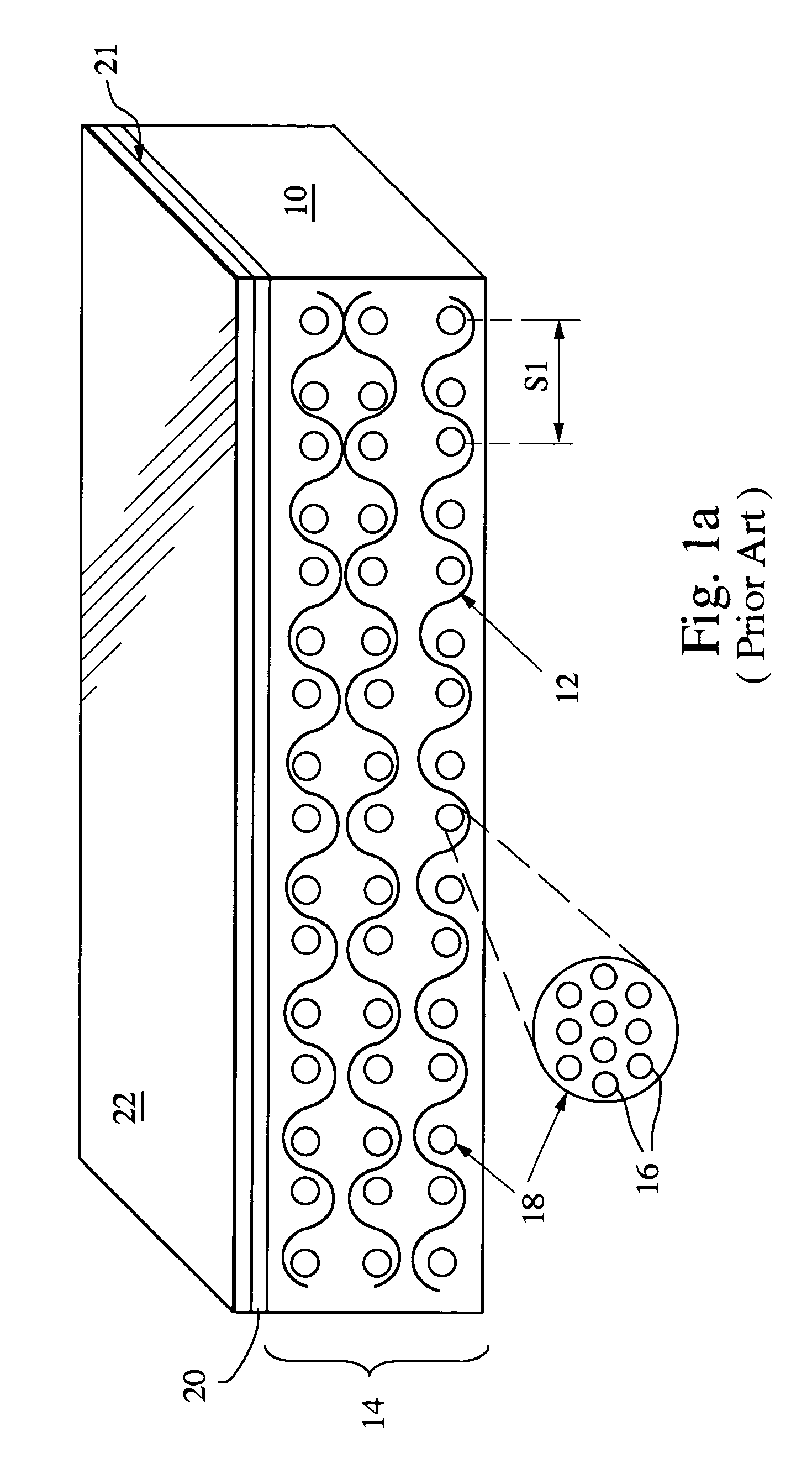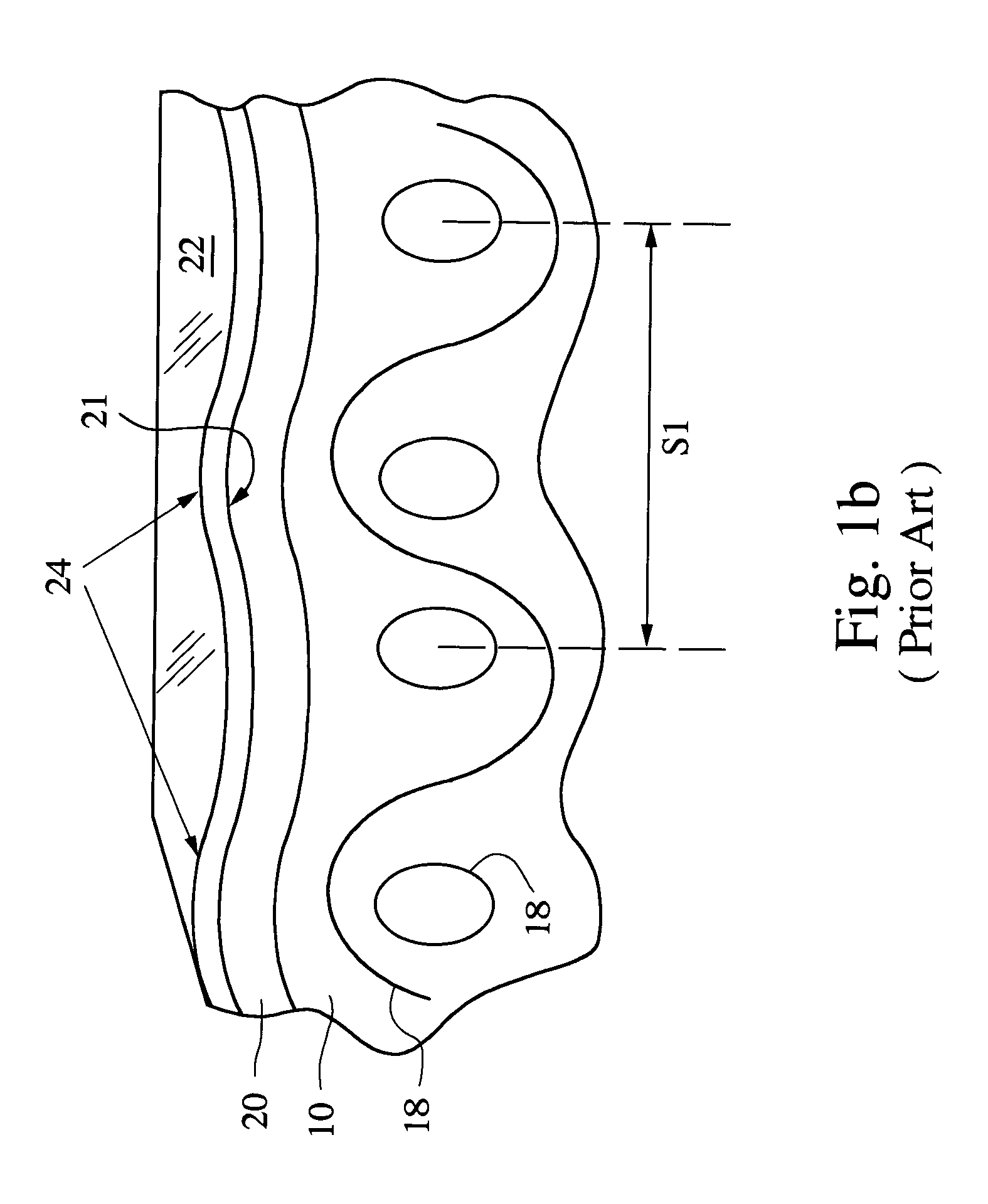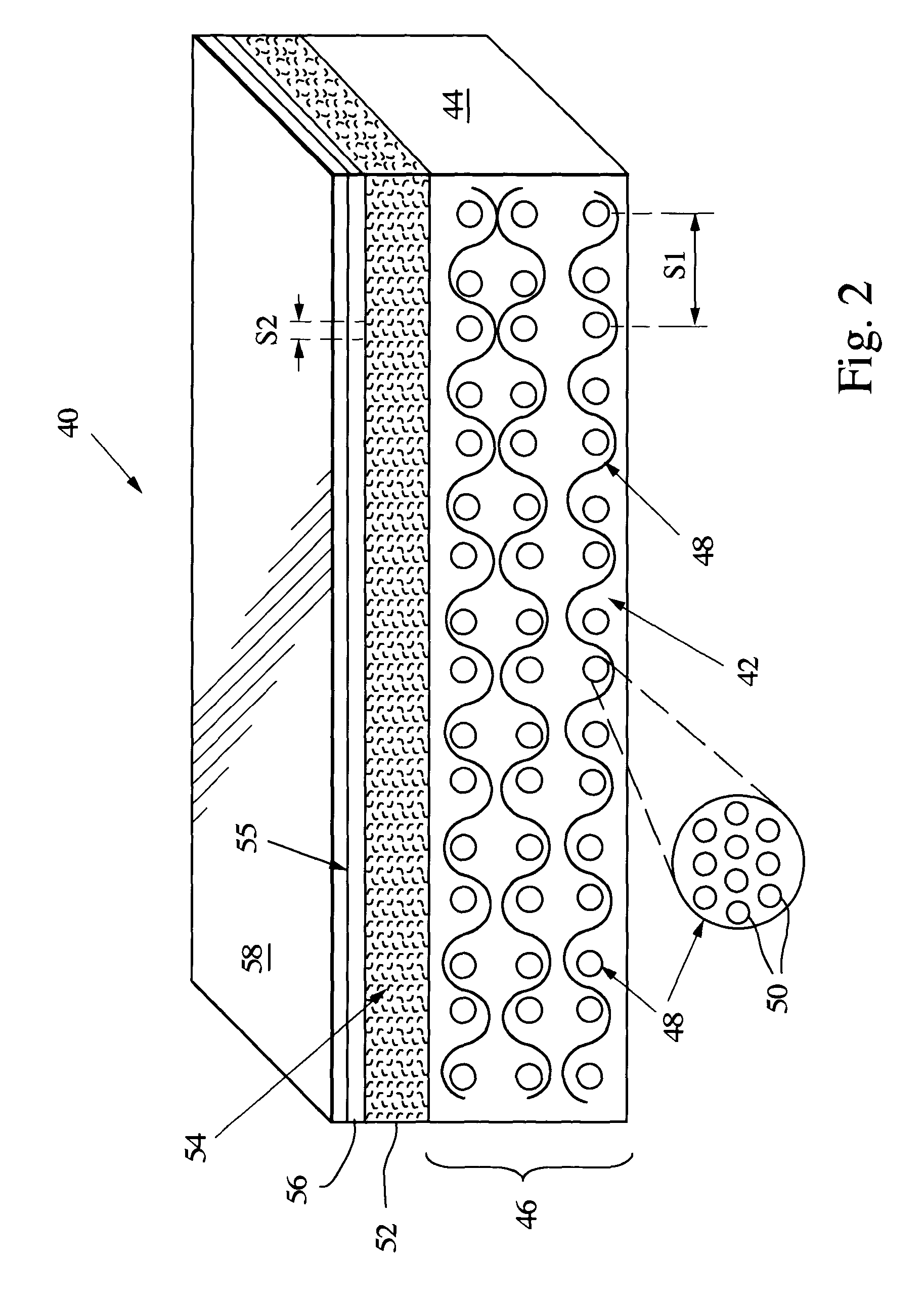Print through elimination in fiber reinforced matrix composite mirrors and method of construction
a fiber reinforced matrix and composite mirror technology, applied in the field of fiber reinforced mirrors, can solve the problems of wasting most of the beryllium by converting it into beryllium chips, affecting the quality of beryllium, and limited availability of beryllium dust,
- Summary
- Abstract
- Description
- Claims
- Application Information
AI Technical Summary
Benefits of technology
Problems solved by technology
Method used
Image
Examples
Embodiment Construction
[0022] The present invention provides a fiber reinforced matrix composite mirror and method of construction that eliminates the problem of “print through”.
[0023] As shown in FIG. 2, a composite mirror 40 includes a stack of graphite fiber weaves 42 that reinforce a matrix 44, suitably a carbon, ceramic (glass), metal or polymer material, to provide a lightweight yet stiff substrate 46. Each tow 48 includes a few hundred to many thousand fibers 50. A layer 52 of small un-towed fibers 54 is bound within the matrix 44 on the surface of the fiber reinforced substrate. An optical quality surface 55 is formed in layer 52 or, as shown here, in an additional layer 56, suitably a metal, semi-metal, carbon, polymer, or ceramic material. A reflective optical coating 58 is deposited on the optical quality surface to provide a mirror surface, which conforms to the shape of the optical quality surface.
[0024] Although layer 52 contributes to the overall mirror stiffness, its primary function is ...
PUM
| Property | Measurement | Unit |
|---|---|---|
| Length | aaaaa | aaaaa |
| Diameter | aaaaa | aaaaa |
| Diameter | aaaaa | aaaaa |
Abstract
Description
Claims
Application Information
 Login to View More
Login to View More - R&D
- Intellectual Property
- Life Sciences
- Materials
- Tech Scout
- Unparalleled Data Quality
- Higher Quality Content
- 60% Fewer Hallucinations
Browse by: Latest US Patents, China's latest patents, Technical Efficacy Thesaurus, Application Domain, Technology Topic, Popular Technical Reports.
© 2025 PatSnap. All rights reserved.Legal|Privacy policy|Modern Slavery Act Transparency Statement|Sitemap|About US| Contact US: help@patsnap.com



